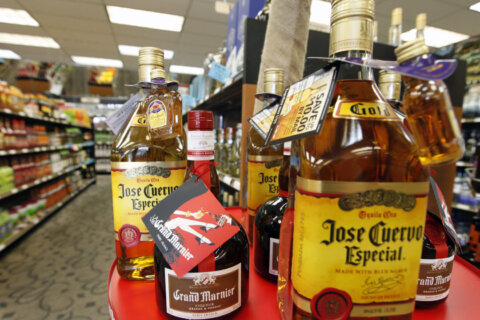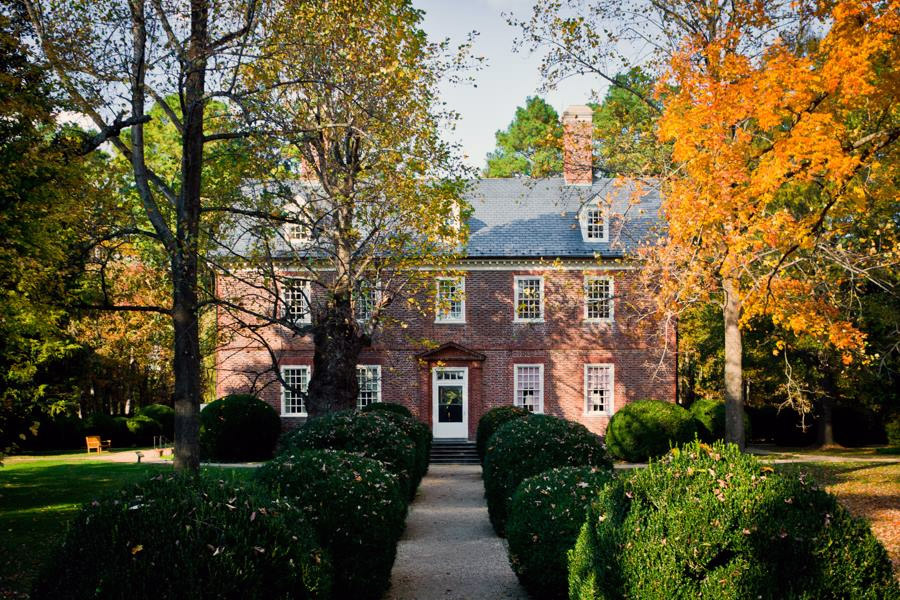
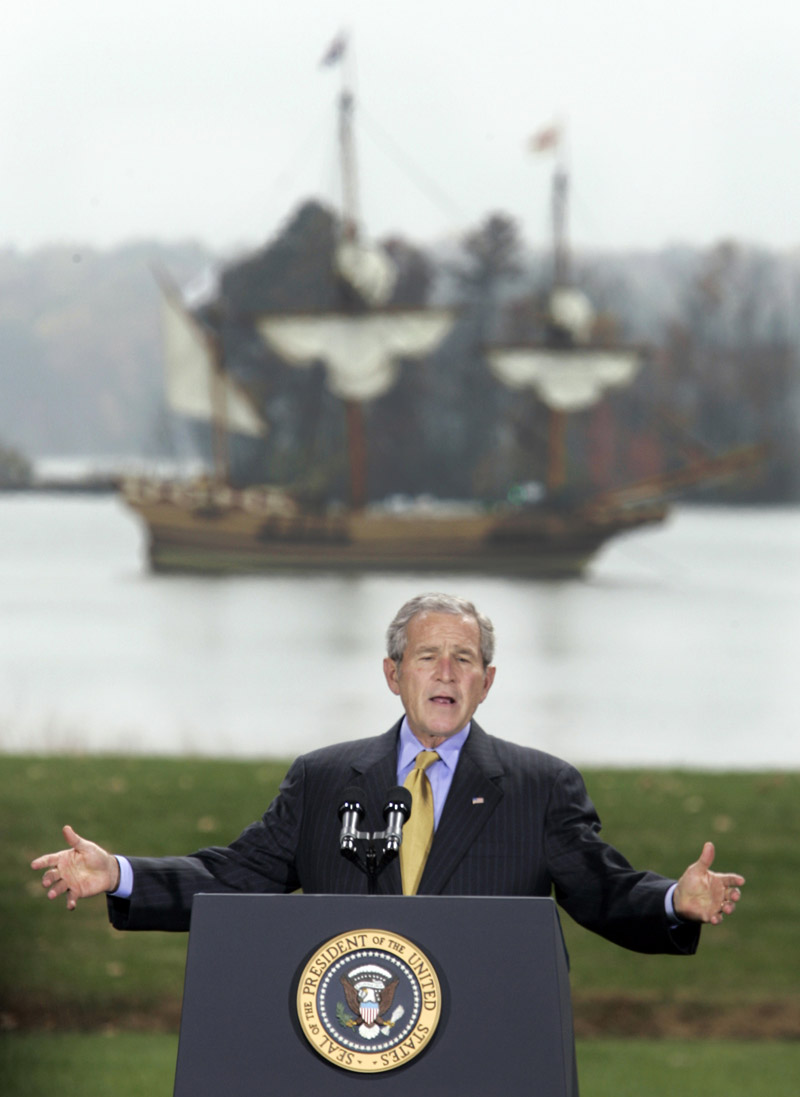
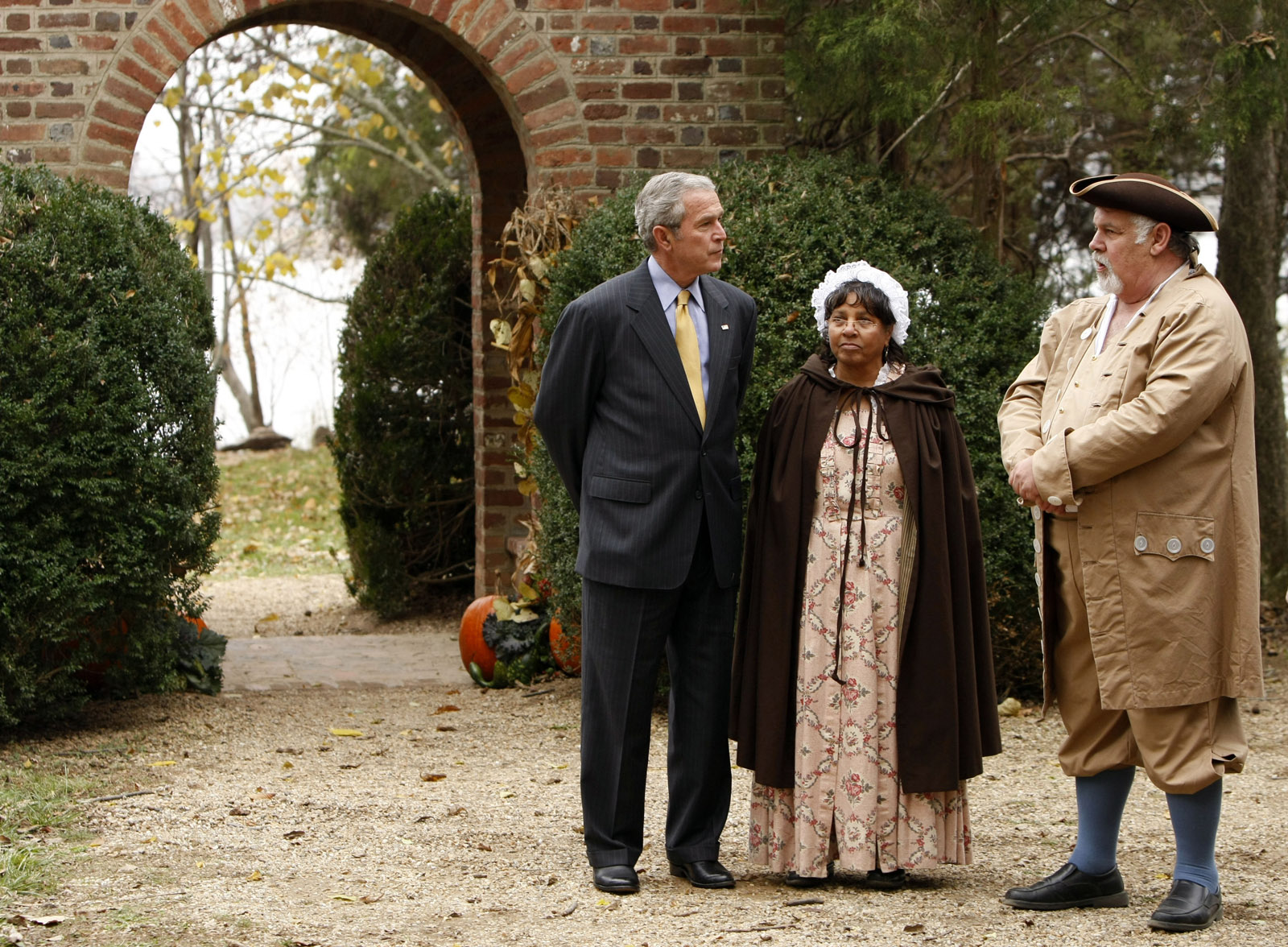
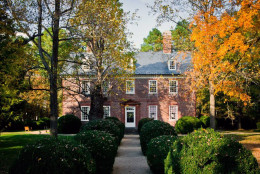

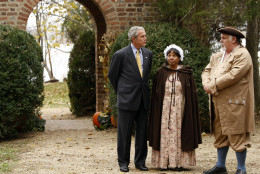
WASHINGTON — Yes, Virginia, there was a thanksgiving celebration at Berkeley Plantation. But no, it was not the very first in North America.
Tuesday, during a visit to WTOP, Virginia Gov. Terry McAuliffe proudly claimed that Berkeley Plantation in Charles City County held the first such celebration in 1619.
“Forget about this little pilgrim picnic thing they had up, somewhere up in Massachusetts,” McAuliffe said. “We were the first place.”
The pilgrims feasted with their friends in the fall of 1621. But there were at least a half dozen other thanksgiving observances that predate the pilgrims, said Tracy McKenzie, chair of the history department at Wheaton College who has studied the origins of the modern American holiday.
Native Americans widely held celebrations linked to crops and the harvest. Among European settlers, Spanish colonists likely hosted thanksgiving in what today is known as Texas, and they also celebrated thanksgiving, likely a Catholic mass, in Florida in the 1560s.
French Huguenots also gave thanks in Florida. And English colonists celebrated in Maine in the early 1600s, McKenzie said.
But Virginians weren’t too far behind and did beat the pilgrims of Plymouth Rock fame by a few years, including an observance in 1610 and another in 1619, McKenzie said.
English settlers gave a prayer of thanks upon arriving on dry ground on Dec. 4, 1619, at what’s known as Harrison’s Landing in Charles City County. Berkeley Plantation still celebrates that somber, religious event with a festival each November.
The settlers’ prayer was preplanned and documented, the key differences between Berkeley’s thanksgiving and other earlier celebrations, says plantation office manager Tammy Radcliff.
The 35 settlers were ordered to give thanks in instructions provided by their benefactors, who funded their endeavor, said James Horn, president of the Jamestown Rediscovery Foundation, in an email.
The order read:
“Wee ordaine that the day of our ships arrivall at the place assigned for plantation in the land of Virginia shall be yearly and perpetually keept holy as a day of thanksgiving to Almighty god. “
However, there are no records that directly mention that the settlers followed through with the order, according to Horn.
“But there is no reason to doubt that a ceremony of some kind took place on that day given the explicit directions of the sponsors,” he said. He called it “the first official thanksgiving in English America that we know of.”
The observance nine years earlier could refer to the arrival of the colony’s governor, Lord De La Warr, at Jamestown on June 10, 1610, when he “reportedly dropped to his knees and said a silent prayer,” Horn said.
The forgotten holiday
The joyful, holiday feast story of the pilgrims has overshadowed the somber story of Berkeley’s Plantation, Radcliff said.
But the Virginia story will be told, Radcliff says. A new documentary on the plantation is set for release next year.
“There are various groups in Virginia that feel deeply insulted that we’ve forgotten them,” McKenzie said.
The story of the pilgrims and their fall thanksgiving feast spread west as New Englanders migrated deeper into the heartland. By the Civil War, the holiday was celebrated in many northern states, but not in the South where it was considered a “Yankee holiday,” he said.
Eventually, the entire country embraced the holiday and the story of the pilgrims sharing their bounty with their friends endured.
“Part of it surely has to do with regional rivalries. You sort of have these two contesting stories for the early founding of the future United States and it’s primarily a rivalry between New England and Virginia,” McKenzie says. “There’s no question which one of those stories ultimately won out.”

